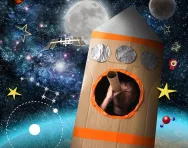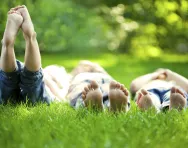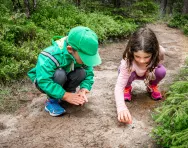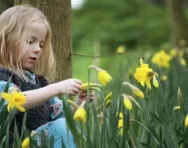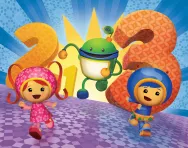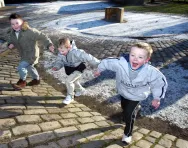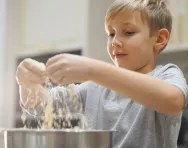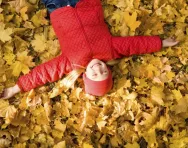Important update from TheSchoolRun
For the past 13 years, TheSchoolRun has been run by a small team of mums working from home, dedicated to providing quality educational resources to primary school parents. Unfortunately, rising supplier costs and falling revenue have made it impossible for us to continue operating, and we’ve had to make the difficult decision to close. The good news: We’ve arranged for another educational provider to take over many of our resources. These will be hosted on a new portal, where the content will be updated and expanded to support your child’s learning.
What this means for subscribers:
- Your subscription is still active, and for now, you can keep using the website as normal — just log in with your usual details to access all our articles and resources*.
- In a few months, all resources will move to the new portal. You’ll continue to have access there until your subscription ends. We’ll send you full details nearer the time.
- As a thank you for your support, we’ll also be sending you 16 primary school eBooks (worth £108.84) to download and keep.
A few changes to be aware of:
- The Learning Journey weekly email has ended, but your child’s plan will still be updated on your dashboard each Monday. Just log in to see the recommended worksheets.
- The 11+ weekly emails have now ended. We sent you all the remaining emails in the series at the end of March — please check your inbox (and spam folder) if you haven’t seen them. You can also follow the full programme here: 11+ Learning Journey.
If you have any questions, please contact us at [email protected]. Thank you for being part of our journey it’s been a privilege to support your family’s learning.
*If you need to reset your password, it will still work as usual. Please check your spam folder if the reset email doesn’t appear in your inbox.
What your child learns in Nursery science

Probably the most important rule of school Nursery classes is that children learn best through play – and through play, they’ll begin to learn the very basics of science.
Many of the adult-led activities in Nursery have a science focus, and naturally appeal to young, enquiring minds. They may not be labelled biology, chemistry or physics, but nonetheless, they introduce simple scientific concepts that will be built on as they get older.
Science falls within three key core areas of the Early Years Foundation Stage (EYFS) Framework (basically, the curriculum for pre-school, Nursery and Reception children):
- Personal, social and emotional development
- Physical development
- Understanding the world
Each core area contains a number of Early Learning Goals (ELGs) that children work toward in the Early Years.
Early Learning Goal: Personal, social and emotional development
Your child will be encouraged to:
- Learn about relationships, within nuclear and extended families, friendship groups, and in their community: the very first stage of relationships and sex education, which is part of the Key Stage 2 curriculum. For example, children often learn about ‘people who help us’ and might have visits from a fire fighter, doctor or dentist who talk about their jobs.
- Learn to look after their bodies, with adult role modelling – this includes basic hygiene (washing hands, using tissues for runny noses, etc) and an introduction to the principles of healthy eating.
Try this:
- Read books with your child that focus on relationships and roles. There are lots of fantastic children’s books that explore the many different types of relationships, including stepfamilies, same-sex parents, ethnic diversity, disability, and lots more.
- When your child needs to go to the doctor or dentist, explain why. What will the doctor or dentist do? Why do they need to do it? What tools or equipment might they use? A good health professional will always be willing to explain what they’re doing in child-friendly terms.
- Involve your child in planning and preparing healthy meals. Take them shopping with you and let them help you find and choose healthy ingredients. Encourage them to be hands-on in the kitchen: they could chop soft fruit or veg with a blunt knife, pour their own fruit juice, and help to pack a balanced lunchbox, if they take one to Nursery.
- Make sure you role model and encourage good hygiene – show them how to wash their hands properly, use a tissue if they have a cold, and brush their teeth (finishing the job yourself). All the while, talk to them about why you’re doing it: ‘When we play outside and our hands get muddy, they get covered in germs. Germs can make us ill, so when we come inside, we wash our hands to wash the germs down the sink.”
Early Learning Goal: Physical development
Your child will be encouraged to:
- Learn why physical activity is important to help them live a healthy, active life.
- Play games and be active in ways such as running, jumping, climbing, crawling etc. There is often lots of active play in Nursery, within and outside of PE lessons, with free access to outdoor play space where they can develop strength, balance, coordination and spatial awareness.
Try this:
- Embrace opportunities for your child to be active, at home and outside the house, such as in the park or playground. Talk to them about how the activity they’re doing helps them become stronger, healthier and fitter.
- Talk to your child about how being active affects their body: “Wow, you were running so fast! Put your hand on your chest – can you feel how fast it’s beating? Why do you think that might be?”
Early Learning Goal: Understanding the world
Your child will be encouraged to:
- Explore the natural world around them, making observations and drawing pictures of animals and plants.
- Learn some similarities and differences between the natural world around them and contrasting environments, drawing on their experiences and what has been read in class: for example, the teacher / keyworker may read a non-fiction book about deserts; the children then use descriptive words like ‘hot,’ ‘sandy,’ ‘dry’ to describe them, and use different materials to make a desert collage.
- Understand some important processes and changes in the natural world, including the seasons and changing states of matter (such as ice – water – steam).
Try this:
- Get outside as much as you can, in all seasons. There are so many things to do and talk about – for example, in summer, you can talk about the sun, why it’s stronger/hotter, how it affects plants differently (some thrive, and some die), how it affects our bodies. In autumn, you can collect conkers and pine cones, put wellies on and jump in puddles, talk about how the weather is changing and why the leaves are falling off the trees, etc.
- Read books, watch TV programmes and/or visit places where they can see different types of animals. Talk about their characteristics, introducing new vocabulary as you do so. Ask your child to think about why, for example, an elephant has a long trunk, or why female cows have udders and male cows don’t.
- If you have a pet, encourage your child to help to look after it – a great lesson in what animals (and humans!) need to stay healthy and happy.
- Plant some seeds or bulbs in the garden, a window box or a pot, and watch them grow. Get your child to check their plant every day and see how it’s growing, and encourage them to be in charge of watering it. Planting vegetable seeds is a particularly good activity, as you can tie in observing their growth with talking about healthy eating and why it’s good for the body – and children are often more willing to try new veg if they’ve grown them themselves.
- Use objects from nature in arts and crafts activities: you could make a nature collage, press flowers, try leaf-rubbing, or print patterns using apples cut in half, pine cones, feathers etc.
